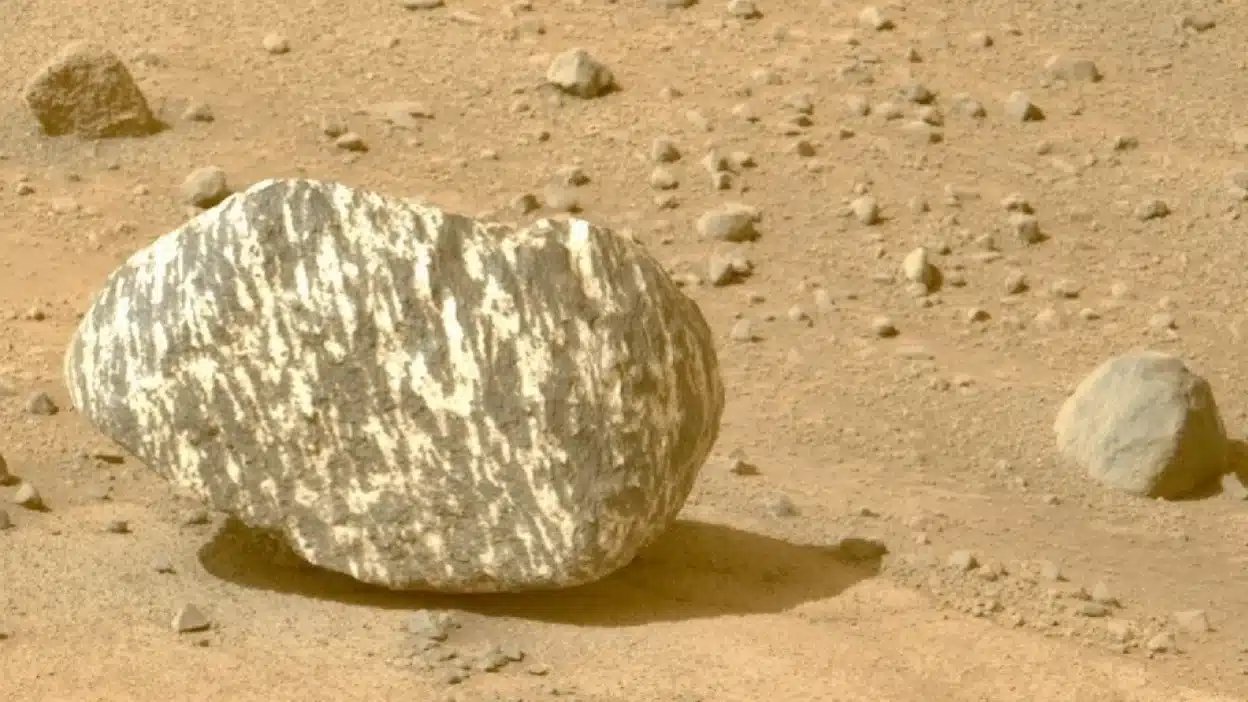NASA’s Perseverance Rover Explores Unusual Martian Rock Formation

NASA’s Perseverance rover has made significant strides in its exploration of Mars, recently completing an analysis of a rock named “Kenmore.” This investigation revealed crucial details about the rock’s mineral composition, shedding light on the planet’s ancient environmental conditions. The rover’s findings, which include the discovery of clay and manganese-rich minerals, are vital for understanding Mars’ potential for supporting future human missions and sustainable living.
Insights from the Kenmore Rock Analysis
NASA’s Jet Propulsion Laboratory reported that Kenmore is the 30th rock to be abraded by Perseverance since its landing in Jezero Crater. The rover utilized its Dust Removal Tool (gDRT), which employs controlled bursts of nitrogen to clear the rock’s surface. This preparation allowed advanced instruments such as WATSON, SuperCam, SHERLOC, and PIXL to conduct detailed imaging and spectroscopy. Notably, SuperCam detected clay minerals rich in water-bound hydroxides, while PIXL identified manganese hydroxide for the first time during this mission. The presence of feldspar further suggests a connection to ancient planetary processes, providing a deeper understanding of Mars’ geological history.
The abrasion process enabled scientists to examine the underlying layers of Mars’ surface, revealing tailings that were analyzed for their mineral content. The results indicated relative concentrations of iron and magnesium similar to those found in hydrated minerals. Researchers highlighted the benefits of using gas-based cleaning methods over traditional brushes, which could introduce contamination from Earth. This comprehensive geochemical analysis aligns with long-term objectives to assess Mars’ potential for water storage, fuel extraction, and the development of building materials for future missions.
Record-Breaking Autonomous Drive
In addition to its geological discoveries, Perseverance achieved a new milestone in autonomous navigation. On June 19, the rover traveled an impressive 1,348 feet, equivalent to 4.5 football fields, breaking its previous drive record. Engineers attributed this accomplishment to the rover’s AutoNav system, which allows it to navigate and stop precisely at predetermined targets. This capability underscores Perseverance’s efficiency in covering significant distances while scouting areas of scientific interest.
The rover’s ability to traverse the Martian landscape autonomously not only enhances its operational efficiency but also allows scientists to gather more data about the planet’s surface. As Perseverance continues to explore and analyze its surroundings, it contributes valuable insights into Mars’ geology and potential habitability.
Advancing Our Understanding of Mars
As Perseverance continues its journey across the Martian terrain, it is gradually uncovering the planet’s secrets. Each sample collected and analyzed adds to the growing body of knowledge about Mars’ surface chemistry and geological history. The rover’s findings are essential for future human exploration, as they will help ensure the safety and sustainability of astronauts on Mars.
The ongoing research conducted by Perseverance not only enhances our understanding of Mars but also prepares for the possibility of returning samples to Earth. The insights gained from these analyses will play a crucial role in shaping the future of space exploration and our quest to understand our neighboring planet better. With each discovery, scientists move closer to unraveling the mysteries of Mars and its potential to support life.
Observer Voice is the one stop site for National, International news, Sports, Editor’s Choice, Art/culture contents, Quotes and much more. We also cover historical contents. Historical contents includes World History, Indian History, and what happened today. The website also covers Entertainment across the India and World.

